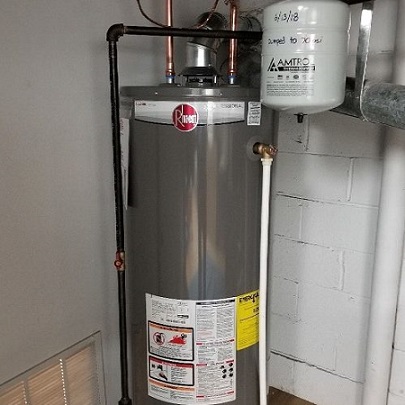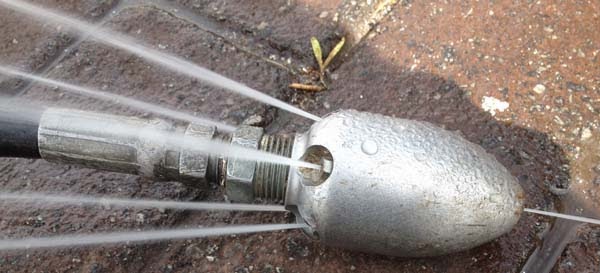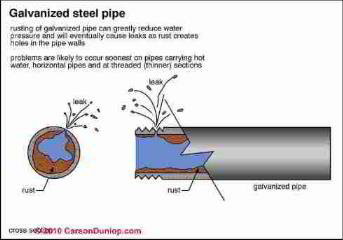The water pressure in your kitchen sink is a crucial aspect of daily tasks, from washing dishes to filling pots for cooking. If you’ve noticed a decrease in water pressure, there are several potential causes and solutions to explore. One common culprit is a clogged aerator. Over time, mineral deposits can accumulate in the aerator, hindering the flow of water. Cleaning or replacing the aerator is a simple and cost-effective way to address this issue and restore optimal water pressure.
Another factor to consider is the condition of your pipes. Old or corroded pipes can impede water flow, leading to reduced pressure. Inspecting your plumbing system for any signs of deterioration and replacing worn-out pipes can significantly improve water pressure. Additionally, checking for leaks in the pipes is essential, as even minor leaks can contribute to a decrease in pressure over time.
The water pressure regulator, often located near the main water line, plays a crucial role in maintaining consistent pressure throughout your home. If the regulator is not set correctly or is malfunctioning, it can result in low water pressure. Adjusting or replacing the regulator is a more advanced solution that may require the assistance of a professional plumber.
Sometimes, the issue lies with the water supply itself. Municipal water systems can experience fluctuations in pressure, impacting your home’s water pressure. Contacting your local water utility to inquire about any ongoing issues or scheduled maintenance can provide valuable information. In some cases, installing a water pressure booster system may be necessary to ensure a steady and adequate flow.

Water softeners are commonly used to reduce the hardness of water by removing minerals like calcium and magnesium. While beneficial for preventing scale buildup, water softeners can also contribute to decreased water pressure if not properly maintained. Regularly servicing and cleaning your water softener can help avoid this issue and ensure optimal water pressure in your kitchen.
Consider the age and capacity of your water heater as well. An outdated or undersized water heater may struggle to meet the demands of your household, resulting in reduced water pressure. Upgrading to a more efficient and appropriately sized water heater can enhance overall performance and address pressure concerns.
If you have a well as your water source, the well pump plays a pivotal role in delivering water to your home. A malfunctioning well pump can lead to decreased water pressure. Regular maintenance, such as checking the pressure switch and ensuring the pump is in good working condition, is essential for consistent water pressure from your well.
In some cases, the problem may be specific to the kitchen sink itself. Check for any obstructions or blockages in the faucet or water supply lines leading to the sink. Sediment buildup in the pipes can also contribute to decreased water pressure. Flushing the pipes or using a pipe-cleaning solution can help remove accumulated debris and restore proper flow.

For those with a pull-out or pull-down faucet, issues with the retractable hose can impact water pressure. Inspecting the hose for kinks, knots, or blockages and ensuring proper installation can alleviate this issue. Replacing a damaged hose or fixing the connection points can further enhance the functionality of your kitchen faucet.
Sometimes, the water pressure issue may be seasonal, especially in regions with extreme temperatures. Cold weather can lead to frozen pipes, restricting water flow. Insulating exposed pipes and taking preventive measures during winter months can help maintain consistent water pressure.
Water pressure can also be affected by the elevation of your home in relation to the water source. Homes situated at higher elevations may naturally experience lower water pressure. Installing a pressure-boosting system or adjusting the pressure regulator can mitigate this issue and improve water flow.
Addressing low water pressure in your kitchen sink involves a systematic approach. From checking and cleaning the aerator to inspecting and upgrading plumbing components, there are various factors to consider. Regular maintenance, prompt identification of issues, and, when needed, professional assistance can collectively contribute to maintaining optimal water pressure in your kitchen, ensuring efficient and hassle-free daily activities.

Commercial, Residential Plumbing, and Heating – Truly Blessed Plumbing

Low Water Pressure in Kitchen Sink Only – Best Faucet Review

Low water pressure kitchen sink – YouTube

Boost Low Water Pressure in Your House The Family Handyman
Want to lower your water bills? Try reducing the pressure on your kitchen sink. Good for

What is Jet Lining? M. Runk Plumbing Heating

How to Repair Bad Water Pressure Due to Clogged Water Pipes

Party dress, children party dresses, women party dresses, prom dresses, Baby Dresses, Bridesmaid

Party dress, children party dresses, women party dresses, prom dresses, Baby Dresses, Bridesmaid

Party dress, children party dresses, women party dresses, prom dresses, Baby Dresses, Bridesmaid

Related Posts:
- 12 Inch Kitchen Sink
- Old Farm Kitchen Sink
- Tiny Brown Bugs In Kitchen Sink
- Large Kitchen Sink With Drainboard
- Ranch Style Kitchen Sink
- Kitchen Sink Area Design
- Rustic Farmhouse Kitchen Sink
- Sink Small Kitchen
- Modern Farmhouse Kitchen Sink
- Double Bowl Corner Kitchen Sink